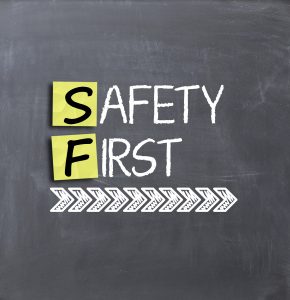At the heart of patient care lies a deep-seated framework of nursing ethics, a cornerstone that defines and distinguishes the nursing profession. Nursing ethics, rooted in the principle of non-maleficence and a rich tapestry of values in nursing, guide nurses in making decisions that not only uphold the dignity and respect of those they serve but also enhance patient care outcomes. Nursing ethics are the values and principles governing nursing practice, conduct, and relationships between the nurse and patient, patient’s family, other healthcare professionals, and the public. Regardless of practice setting or specialty, nurses face ethical challenges every day. Make sure you are familiar with the ethical principles below. These foundational principles play a critical role in every aspect of nursing practice, underlining the importance of ethics in nursing. As healthcare becomes increasingly complex, the ethical dimensions of nursing practice assume even greater significance, necessitating a thorough exploration of how nursing ethics impact patient care and outcomes.

This article delves deeply into the intricacies of nursing ethics, starting with a definition and introduction to its foundational principles, including the nursing code of ethics and the professional values in nursing. It explores the historical perspective of nursing ethics, outlines key ethical principles, and discusses the American Nurses Association’s Code of Ethics in detail. Further, it examines common ethical dilemmas faced by nurses, supplemented with case studies and real-world examples that bring to light the practical implications of ethics in various nursing specialties. Additionally, the role of education and training in reinforcing the importance of nursing professional ethics is scrutinized. By providing a comprehensive overview, this article aims to illuminate the pivotal role of nursing ethics in shaping patient care and outcomes, highlighting the unique values and beliefs that form the nucleus of the nursing profession.
Please also at the conclusion, review AIHCP’s numerous certifications for nurses and other healthcare professionals seeking advancement and career opportunities in healthcare and nursing management, healthcare ethics, and legal nurse consulting. The programs are online and independent study and offer four year certifications to qualifying healthcare professionals.
Key Takeaways
- Nursing ethics provide a framework that helps nurses navigate complex and sensitive situations, ensuring patient care prioritizes dignity, respect, and compassion.
- Ethical principles in nursing include autonomy, beneficence, nonmaleficence, and justice, guiding nurses to make fair and effective decisions.
- Advocacy is a core aspect of nursing ethics, involving patient advocacy, family advocacy, and advocacy within healthcare teams.
- Confidentiality and privacy are critical components of nursing ethics, with legal implications for breaches and the need for cultural sensitivity.
- The evolution of the nursing code of ethics reflects technological advances, societal changes, and the expansion of nursing practice.
Definition and Introduction to Nursing Ethics
Nursing ethics, originating from the Greek word “ethos” meaning character, encompasses the moral principles that govern the behaviors and decisions of nurses in their professional roles. These ethical values are universal rules of conduct that provide a practical framework for identifying what kinds of actions, intentions, and motives are valued within the healthcare setting. Ethics in nursing are crucial as they guide healthcare professionals in recognizing dilemmas, making sound judgments, and ensuring decisions align with both their values and the legal standards that govern their practice. Nursing ethics are the values and principles governing nursing practice, conduct, and relationships between the nurse and patient, patient’s family, other healthcare professionals, and the public. Nurses make ethical decisions daily. In fact, nurses often walk a line between advocating for patients while also adhering to ethical nursing principles.
The foundation of modern nursing ethics can be traced back to the late 19th century, focusing initially on virtues such as physician loyalty, high moral character, and obedience. Since then, the nursing profession has evolved significantly. Nurses have transitioned from mere assistants to key members of the healthcare team, taking on roles as patient advocates. This shift necessitated the development of a formal Code of Ethics, which was first established in the 1950s by the American Nurses Association (ANA). This code guides nurses in their daily practice, setting primary goals and values for the profession.
The ANA first developed the Nursing Code of Ethics in 1950 to provide nurses with a moral compass to use as they worked with patients each day. As the field of healthcare evolved, new technology was developed and social justice issues came to light over the course of the next several decades, the Nursing Code of Ethics continued to evolve with the times. Today, this code is rooted in the ethical principles in nursing while still providing context relevant in today’s global, multicultural society. The ANA’s Code of Ethics serves as a succinct statement of the ethical obligations and duties of every individual entering the nursing profession. It provides a non-negotiable ethical standard and expresses nursing’s commitment to society. The Code has undergone revisions to reflect advances in technology, societal changes, and the expansion of nursing practice into areas such as advanced practice roles, research, education, health policy, and administration. These revisions ensure that the Code remains relevant and continues to guide nurses in maintaining healthy work environments and upholding the integrity of their profession.
In daily practice, nurses routinely encounter situations with ethical implications, such as dealing with life-threatening conditions or respecting the individual wishes and preferences of patients. The ethical principles that nurses adhere to—such as Autonomy, Beneficence, Justice, and Nonmaleficence—are instrumental in guiding their decisions and actions. These principles ensure that nurses provide high-quality care while considering the best interests of their patients, thereby upholding the profession’s reputation for high honesty and ethics.
Moreover, the nursing code of ethics emphasizes the importance of cultural awareness and competency. As nurses increasingly care for patients from diverse backgrounds, it is imperative that they make culturally appropriate ethical decisions. This involves understanding how social and cultural differences influence patients’ healthcare-related beliefs, attitudes, and actions. By fostering open communication, normalizing cultural differences, and examining their own biases, nurses can better meet the unique needs of each patient, thus enhancing the overall quality of care and patient outcomes.
Historical Perspective of Nursing Ethics
The evolution of nursing ethics has been closely tied to the historical development of the nursing profession itself. Initially centered on virtues such as loyalty to physicians and high moral character, the ethical framework of nursing began to take a formal shape during significant historical periods, notably during the American Civil War. During this era, nursing began to professionalize, and early nurse pioneers established training protocols and ethical codes that emphasized morality and character. Nurses treated soldiers from both sides of the conflict, striving to improve the health of all patients, reflecting the core ethical principle of impartiality in care.
The need for a structured ethical framework became more pronounced nearly a century later, following the biomedical atrocities committed during World War II and the subsequent revelations of patient harm in experiments, such as those conducted at Tuskegee. This period saw the emergence of biomedical ethics, which focused on ethical issues related to biomedical research and medical practice. The Nuremberg Code, developed in response to these atrocities, outlined major biomedical ethical principles, including respect for autonomy, beneficence, nonmaleficence, and justice, principles that continue to be foundational in both medical and nursing ethics today.
Distinct from biomedical ethics, nursing ethics is primarily relational, focusing on the development of relationships between nurses and their patients, other health professionals, themselves, the nursing profession, and society. This relational aspect underscores the importance of developing a healing relationship to treat the patient holistically, not just the disease—an approach as fundamental today as it was 150 years ago.
Historically, nurses operated without a formalized code of ethics, often using Gretter’s Nightingale Pledge, akin to the Hippocratic Oath in medicine, to guide their practice. The formalization of nursing ethics began in the mid-1800s, culminating in the adoption of the first formal Code of Ethics by the American Nurses Association (ANA) in 1950. This code was a pivotal development in nursing ethics, providing a succinct statement of the ethical obligations and duties of every nurse, and establishing a non-negotiable ethical standard.
The evolution of the ANA’s Code of Ethics reflects broader societal changes and advances in healthcare. Notable revisions occurred in 1960 and 1968, with the latter revision introducing significant changes such as the reduction of provisions from 17 to 10, the addition of brief interpretations to aid application, and a fundamental shift in language to emphasize the dignity and privacy of individuals, unrestricted by considerations of nationality, race, creed, color, or status.
These historical developments in nursing ethics not only shaped the professional practice of nurses but also reinforced the profession’s commitment to providing compassionate, respectful, and ethical care to all patients, thereby upholding the integrity and trust placed in the nursing profession. The Code of Ethics for Nurses with Interpretive Statements, or “The Code”, is a vital tool for nurses now and in the future. While the foundational values of nursing do not change, The Code is regularly updated to reflect changes in health care structure, financing, and delivery. It supports nurses in providing consistently respectful, humane, and dignified care.
Key Ethical Principles in Nursing
Autonomy
Autonomy in nursing is fundamentally about respecting the patient’s right to self-determination. This principle is crucial, as it involves providing patients with enough information to make informed decisions according to their own beliefs and values. Autonomy extends to respecting the scope of practice defined by state and organizational rules, ensuring that care is patient-centered and not dictated solely by medical or nursing protocols. Examples of autonomy in practice include the administration of as-needed medications and assigning duties based on a nurse’s competence level. It also involves respecting a patient’s decision to refuse treatments, even if these treatments might benefit them, thereby prioritizing the patient’s personal values and choices over clinical recommendations.
Beneficence
Beneficence involves actions that promote the welfare and well-being of patients. Nurses practicing beneficence are committed to doing good and ensuring that the patient’s best interests are always considered, which may sometimes require setting aside personal opinions. This principle is reflected in actions such as providing comfort to those in distress, assisting with daily tasks a patient cannot perform alone, and administering treatments effectively and timely. Beneficence is not just about treatment but also about fostering a caring environment that supports the patient’s overall health and recovery.
Justice
The principle of justice in nursing ensures fair and equitable treatment of all patients, regardless of their background or circumstances. It requires impartiality in patient care, which means decisions should not be influenced by factors such as age, ethnicity, economic status, or religion. Justice involves treating all patients with equal care and respect, ensuring that resources are distributed fairly, and advocating for vulnerable populations who might not have adequate access to healthcare services. Examples include fair allocation of nursing resources and unbiased care delivery, which are essential for maintaining trust and integrity in the nursing profession.
Nonmaleficence
Nonmaleficence, a core principle of nursing ethics, dictates that nurses should do no harm. This involves taking proactive steps to ensure patient safety and prevent harm, whether through direct care or systemic practices. It requires careful consideration of treatment interventions, where the potential benefits must outweigh the risks. Nonmaleficence is about protecting patients from unnecessary suffering and ensuring high-quality care that does not compromise patient well-being. Examples include withholding a medication that could cause adverse reactions and implementing safety measures to prevent patient injuries.
These ethical principles are interrelated and guide nurses in providing compassionate, fair, and effective care, ensuring that patient welfare is maintained at the highest standards across all aspects of nursing practice.
The American Nurses Association’s Code of Ethics
The American Nurses Association’s Code of Ethics, known as “The Code,” is a crucial framework that guides the professional conduct of nurses across the United States. It outlines the ethical commitments and responsibilities expected of every nurse, ensuring that they adhere to the highest standards of patient care and professional integrity.

Provisions Overview
“The Code” comprises nine provisions, each accompanied by interpretive statements that provide further clarity and guidance. These provisions encapsulate the fundamental values and commitments of nurses, setting the profession’s non-negotiable ethical standard. The first three provisions focus on the fundamental values and commitments of the nurse, emphasizing respect, dignity, and compassion in patient care. Provisions four through six delineate the boundaries of duty and loyalty, which include authority, accountability, and responsibility in nursing practice. The final provisions, seven through nine, extend the duties of nurses beyond individual patient encounters, addressing the broader roles of nurses in research, policy development, and health diplomacy.
Importance of the Code
“The Code” serves as a vital tool for nurses, providing a succinct statement of the ethical values, obligations, and duties inherent in the nursing profession. It is regularly updated to reflect changes in healthcare delivery, technology, and societal needs, ensuring its relevance and applicability in modern healthcare settings. In 2015, recognizing the critical role of ethical practice in patient safety and quality of care, the ANA designated it the “Year of Ethics,” which included the release of a revised code.
This ongoing development process allows “The Code” to respond effectively to the contemporary challenges nurses face, including those posed by the failings in U.S. healthcare and negative social determinants of health. It empowers nurses to make ethical decisions confidently, enhancing their ability to provide safe, quality care across diverse patient populations and complex clinical situations.
Furthermore, “The Code” acts as a social contract between nurses and the public, illustrating the profession’s commitment to uphold ethical standards and advocate for patient rights and well-being. It underscores the importance of mutual support among nurses, enabling them to meet their professional and ethical obligations.
Through its comprehensive and evolving nature, “The Code” not only guides nurses in their everyday practice but also reflects the proud ethical heritage of the nursing profession, ensuring its integrity and the trust placed in it by society.
Common Ethical Dilemmas Faced by Nurses
Nurses frequently encounter ethical dilemmas that challenge their professional and personal values. These dilemmas often arise from conflicts between a nurse’s duties and their ethical obligations, as outlined in the nursing code of ethics. Understanding these common ethical dilemmas can help nurses navigate these challenging situations effectively.
Autonomy vs. Beneficence
One significant ethical dilemma occurs when a patient’s autonomy, the right to make decisions about their own health, conflicts with the principle of beneficence, which is the duty of healthcare providers to do good and act in the patient’s best interest. For instance, a patient with stage IV cancer may refuse pain medication to remain alert, despite the family’s wishes and the nurse’s knowledge that the medication would alleviate suffering. Respecting the patient’s decision, while difficult, aligns with respecting their autonomy.
Informed Consent and Patient Information
Nurses often face dilemmas surrounding informed consent, where they must ensure that patients or their surrogates are fully aware of the risks and benefits of treatments. This becomes particularly complex when patients receive a dire prognosis or when families request withholding information about a patient’s condition. Nurses must balance the ethical need for honesty with sensitivity to the patient’s emotional and physical well-being.
End-of-Life Decisions
End-of-life care presents dilemmas such as whether to continue life-sustaining treatments or adhere to do-not-resuscitate (DNR) orders. Nurses must navigate these decisions, respecting the patient’s wishes and the ethical principle of nonmaleficence, which obliges them to do no harm.
Personal Beliefs vs. Professional Responsibilities
Nurses may also encounter situations where their personal beliefs conflict with professional responsibilities. This includes scenarios involving abortion, where legal and medical requirements might conflict with a nurse’s personal beliefs. The challenge lies in providing unbiased, respectful care regardless of personal views.
Resource Allocation
Resource allocation becomes a dilemma in situations of scarcity, where nurses must decide how to distribute limited medical supplies or attention among patients. This challenges the ethical principle of justice, which calls for fair and equitable treatment of all patients.
Confidentiality and Privacy
Confidentiality issues arise when the need to protect a patient’s private information conflicts with other ethical or legal obligations, such as reporting communicable diseases or potential harm to others. Nurses must carefully consider the implications of maintaining or breaching confidentiality in each situation.
Professional Boundaries
Maintaining professional boundaries is crucial yet challenging, especially in long-term care settings or small communities where nurses may have dual relationships with patients. Nurses must remain professional without compromising the compassionate care that is fundamental to nursing.
These dilemmas underscore the importance of ethical awareness and decision-making in nursing. By adhering to the nursing code of ethics and seeking guidance from ethics committees or senior healthcare professionals, nurses can navigate these complex situations while upholding the integrity and ethical standards of their profession.
The Role of Advocacy in Nursing
Patient Advocacy

Patient advocacy in nursing goes beyond medical care alone and encompasses a broader range of responsibilities. Nurses help patients navigate the healthcare system and communicate with members of their care team, including when patients cannot speak for themselves. This also involves preserving dignity and ensuring equitable care. Nurses must also advocate for themselves to prioritize a safe work environment.
Advocacy for Families
Nurses play a crucial role in advocating for the families of patients. This includes providing emotional support, ensuring that families are well-informed about the patient’s condition and treatment options, and helping them make informed decisions. Nurses must balance the needs and wishes of the family with the best interests of the patient.
Advocacy within Healthcare Teams
Advocacy within healthcare teams is essential for fostering a collaborative and supportive environment. Nurses should work collaboratively with other healthcare professionals within their patients’ care teams to ensure that each member’s voice is heard and respected. This includes advocating for necessary resources, fair treatment, and the implementation of best practices to improve patient outcomes.
Advocacy in nursing is not limited to patient care; it extends to families and the healthcare team, ensuring a holistic approach to healthcare delivery.
Ethical Decision-Making in Nursing Practice
Balancing Patient Wishes and Protocols
Nurses often face the challenge of balancing patient wishes with established protocols. This balance is crucial to ensure both patient autonomy and adherence to medical guidelines. Factors influencing this balance include the patient’s medical needs, the time available for decision-making, and the nurse’s experience level.
Ethical Dilemmas in Acute Care
In acute care settings, nurses frequently encounter ethical dilemmas that require immediate action. These dilemmas can range from life-or-death decisions to more nuanced issues involving patient consent and confidentiality. Understanding ethics and the consequences of their actions can help a nurse make the best decision when it isn’t always apparent.
Collaborative Ethical Decision-Making
Collaborative ethical decision-making involves the input of various healthcare professionals to arrive at the best possible outcome for the patient. This approach not only unifies nursing practices but also ensures that decisions are beneficial to the patient, nursing student, employee, or organization. A health care organization’s support of ethical principles unifies its nursing practices and settings.
In moments of crisis, the ability to make quick, ethical decisions is paramount for nurses. This highlights the importance of ethical decision-making in nursing.
Confidentiality and Privacy in Nursing
Maintaining Patient Confidentiality
Confidentiality is the right for personal details and health care information to be protected and private unless permission is given to share. The Health Insurance Portability and Accountability Act of 1996 (HIPAA) is a federal law that includes standards to protect sensitive patient health information. Nurses’ obligation to protect patients’ right to privacy is paramount in maintaining trust and promoting effective care.
Legal Implications of Privacy Breaches
Breaches in patient confidentiality can have serious legal consequences. Healthcare professionals must be aware of the legal standards and regulations, such as HIPAA, that govern patient information. Violations can result in penalties, including fines and loss of licensure. It is crucial for nurses to understand their duty of confidentiality to avoid legal repercussions.
Cultural Sensitivity in Confidentiality
Nurses often find themselves navigating the preferences of their patients while also navigating cultural differences. Cultural sensitivity in maintaining confidentiality involves understanding and respecting diverse cultural perspectives on privacy. This ensures that all patients feel respected and secure in their interactions with healthcare providers.
In nursing, maintaining confidentiality is not just a legal obligation but a fundamental ethical duty that supports patient trust and care quality.
Ethics in Interprofessional Collaboration
Building trust among healthcare professionals is essential for effective interprofessional collaboration. Trust fosters open communication and mutual respect, which are critical for addressing complex ethical issues. An interprofessional team, which can be comprised of doctors, nurses, pharmacists, social workers, etc., often relies on this trust to navigate ethical dilemmas and make decisions that prioritize patient welfare.
Effective communication strategies are vital in ensuring that all team members are on the same page regarding patient care. This involves not only clear and concise verbal communication but also the ethical use of electronic health records and other digital tools. Ethical communication helps in maintaining transparency and accountability within the team.
Conflicts are inevitable in any team setting, but they can be particularly challenging in healthcare due to the high stakes involved. Ethical conflict resolution strategies are necessary to address disagreements while maintaining professional integrity and patient safety. These strategies often include mediation, reflective practice, and support from ethical committees.
Ethical challenges can range from respecting patient autonomy while ensuring safety to managing conflicts between patient needs and resource limitations. Preparing for these challenges involves continuous education, reflective practice, and support from ethical committees and experienced colleagues.
The Impact of Technology on Nursing Ethics
Ethical Use of Electronic Health Records
The integration of electronic health records (EHRs) into healthcare systems has revolutionized patient care. However, it also presents ethical challenges. Ensuring the accuracy and security of patient data is paramount. Nurses must be vigilant in maintaining the integrity of these records to prevent data breaches and ensure patient confidentiality.
Telehealth and Patient Privacy
Telehealth has expanded access to care, especially in remote areas. Yet, it raises concerns about patient privacy. Nurses must navigate the complexities of digital communication to protect sensitive information. This includes using secure platforms and educating patients about privacy risks.
Navigating Social Media as a Nurse
Social media offers opportunities for professional networking and patient education. However, nurses must be cautious about sharing patient information online. Adhering to professional guidelines and maintaining boundaries is essential to uphold the trust in the nursing profession.
The use of digital technology might lead to a decrease in nurses’ moral agency and competence to shape patient-centred care. Digital technologies seem to become integral in modern healthcare, but they must be used responsibly to uphold ethical standards.
Cultural Competence and Ethical Nursing Care
Cultural competence in nursing is essential for providing effective and respectful care to patients from diverse backgrounds. Culturally competent care consists of four components: awareness of one’s cultural worldview, attitudes toward cultural differences, knowledge of different cultural practices, and cross-cultural skills. Nurses must be adept at navigating these components to ensure ethical and compassionate care.
In a multicultural healthcare setting, understanding and respecting cultural differences is not just beneficial but necessary for ethical nursing practice.
Ethical Challenges in Specialized Nursing Fields
Nursing in specialized fields often presents unique ethical challenges that require careful consideration and reflective practice. These challenges can range from respecting patient autonomy while ensuring safety to managing conflicts between patient needs and resource limitations. Preparing for these challenges involves continuous education, reflective practice, and support from ethical committees and experienced colleagues.
Case Studies and Real-World Examples
Case Scenario: Mrs. Khan’s Terminal Cancer Diagnosis
A 75-year-old patient, Mrs. Khan, is admitted to the hospital with terminal cancer. She is in severe pain and has difficulty breathing. Her family requests that the healthcare team withhold the truth about her diagnosis and prognosis, believing that knowing the truth would cause her unnecessary distress. The nurse, who has developed a close relationship with Mrs. Khan, faces an ethical dilemma between respecting the family’s wishes and being honest with the patient about her condition. The nurse believes that Mrs. Khan has the right to know the truth to make informed decisions about her care, yet wants to respect the family’s cultural beliefs and wishes.
Ethical Dilemma: Right to Die
A significant ethical dilemma arises concerning a patient’s right to die. The situation involves a 93-year-old patient with a Do Not Resuscitate (DNR) order, who experiences complications leading to a decision on whether to intubate. Despite the DNR, temporary intubation is considered to manage her high ammonia levels, a treatment not immediately available due to hospital formulary restrictions. The patient, being conscious at times, gives verbal consent for short-term intubation. This case highlights the complexities surrounding end-of-life care decisions, the interpretation of DNR orders, and the necessity for timely access to treatment options.
Case Study: Nurse P and Mr. S’s Living Will
Nurse P faces an ethical challenge when a patient, Mr. S, is admitted to the coronary care unit after a cardiac event in the recovery room. Known to have a living will against extraordinary support measures, Mr. S is found to be in a critical condition requiring aggressive treatment. The attending physicians and Nurse P must decide on the course of action while considering Mr. S’s previously expressed wishes, the unlocated living will, and the ethical implications of potentially withdrawing treatment.
Case Study 1: An Intoxicated Patient’s Autonomy
Patient J, after sustaining injuries in a fight and under the influence of alcohol, decides to leave the emergency department despite medical advice. The healthcare team faces the dilemma of respecting the patient’s autonomy while also considering the safety of others if he drives in his intoxicated state. This scenario explores the balance between patient rights and broader community safety, highlighting the ethical principle of autonomy versus the potential harm his actions might cause to others.
Case Study 2: Suspected Child Abuse
A nurse on a pediatric unit suspects child abuse when discrepancies arise between a child’s behavior at the hospital and the mother’s reports. The ethical considerations involve deciding whether to report suspected abuse based on observations and the father’s concerns, despite a lack of concrete evidence. This case study underscores the ethical challenges in pediatric nursing, particularly in assessing family dynamics and the responsibility to protect vulnerable patients.
These real-world examples and case studies illustrate the profound impact of ethical decision-making in nursing. Nurses often navigate complex situations where they must balance their professional responsibilities, ethical principles, and the diverse needs of patients and their families. These scenarios demonstrate the critical role of ethics in nursing practice, guiding nurses through the moral complexities of modern healthcare.
Ethics in Various Nursing Specialties

Ethical challenges are inherent in nursing across various specialties, each presenting unique dilemmas that require nurses to balance professional obligations with personal values. This section explores how ethical principles are applied in different nursing specialties, emphasizing the importance of the nursing code of ethics and the role of nurses in advocating for patient rights and care.
Critical Care Nursing
In critical care settings, nurses face acute ethical challenges due to the intensity and complexity of care. The principles of non-maleficence and beneficence are particularly significant, as decisions often involve life-sustaining treatments and end-of-life care. Critical care nurses must navigate these decisions while respecting patient autonomy and ensuring that actions taken are in the best interest of the patient. The development of ethics curricula tailored for critical care settings is crucial for preparing nurses to handle these challenges effectively.
Pediatric Nursing
Pediatric nurses work with a vulnerable population, which raises specific ethical concerns related to consent and advocacy. The principle of justice must be carefully considered, as pediatric nurses often advocate for the best interests of their patients when parents or guardians are making health decisions. Ethical dilemmas in pediatric nursing may include issues surrounding parental rights, child welfare, and the complexities of informed consent in younger patients.
Geriatric Nursing
Nurses in geriatric care deal with ethical issues surrounding consent, end-of-life care, and autonomy in an aging population. Ethical challenges often arise from the diminished capacity of elderly patients to make informed decisions about their own care. Geriatric nurses must balance respect for autonomy with the need for beneficence and non-maleficence, ensuring that elderly patients receive compassionate and appropriate care without compromising their dignity or integrity.
Psychiatric Nursing
Psychiatric nursing presents unique challenges related to patient autonomy, confidentiality, and the ethical use of treatment interventions such as restraints and involuntary treatment. Nurses in psychiatric settings must be vigilant about respecting the rights and dignity of patients who may be unable to make decisions for themselves, advocating for their health and safety while also considering the ethical implications of their care decisions.
Oncology Nursing
Oncology nurses confront ethical dilemmas related to patient autonomy, informed consent, and truth-telling in the context of life-threatening illnesses. The balance between providing hope and presenting realistic outcomes is delicate, requiring nurses to navigate complex emotional and ethical landscapes. Oncology nurses play a critical role in ensuring that patients understand their diagnosis and treatment options, facilitating informed decision-making that respects patient values and preferences.
Nursing Research
Nurses involved in research face ethical considerations related to informed consent, patient safety, and the integrity of research practices. Upholding ethical standards in nursing research not only protects participants but also ensures the validity and credibility of the research outcomes. Nurses must advocate for ethical practices in research settings, ensuring that studies are conducted responsibly and with respect for all participants.
In each of these specialties, nurses must adhere to the nursing code of ethics, which provides a framework for addressing ethical dilemmas and supports nurses in their commitment to provide ethical, high-quality care. By understanding and applying ethical principles across various specialties, nurses enhance their ability to advocate for their patients and maintain the integrity of the nursing profession.
The Role of Education and Training in Nursing Ethics

Education and training in nursing ethics play a pivotal role in equipping nurses with the necessary skills to handle ethical dilemmas effectively. As the nursing profession continues to evolve, the complexity of ethical decisions that nurses must make also increases. Therefore, a robust ethical education is essential for preparing nurses to navigate these challenges competently.
Understanding and Applying the ANA Code of Ethics
Courses focused on the American Nurses Association (ANA) Code of Ethics are fundamental in nursing education. These courses aim to familiarize nurses with the code, helping them understand and apply its principles in their daily practice. Through expert-led discussions and assessments of ethical dilemma scenarios, nurses gain a deeper appreciation of how the ANA Code of Ethics guides their professional decisions. Courses designed by the American Institute of Health Care Professionals offers courses in nursing ethics for healthcare professionals.
Enhancing Critical Thinking and Ethical Decision-Making
Critical thinking is crucial in managing ethical situations that arise in nursing care. Training programs that enhance nurses’ critical thinking skills are invaluable, as they provide strategies for ethical decision-making. Such programs include micro-courses that define and explore ethics in nursing practice, helping nurses identify and adhere to ethical behaviors and principles. By completing these courses, nurses are better equipped to implement ethical decisions in their daily interactions with patients.
Addressing the Gaps in Ethics Education
Despite the recognized importance of ethics education, gaps remain in both content and delivery. Many nurses graduate without a sufficient understanding of ethics, which can lead to challenges in their professional practice. Innovative teaching methods, such as case-centered approaches, have been introduced to bridge these gaps. These methods involve practical exercises that encourage nurses to apply ethical theories to real-world scenarios, thereby enhancing their ethical sensitivity and awareness.
The Four Topics Method in Ethics Education
One effective educational approach is the “Four Topics Method,” which structures the identification of clinical ethics problems across four broad areas: medical indications, patient preferences, quality of life, and contextual features. This method assists nurses in systematically analyzing ethical issues and making informed decisions. It has been shown to improve nursing students’ ability to handle ethical dilemmas effectively, particularly when combined with case studies that reflect the complexities of clinical practice.
Incorporating Ethics into Nursing Curriculum
Incorporating ethics into the nursing curriculum is essential for preparing future nurses to handle complex ethical dilemmas. Regular ethics training can provide new insights into the ethical challenges that nurses face and how to navigate them. This foundational knowledge ensures that patient care prioritizes dignity, respect, and compassion.
Continuing Education in Nursing Ethics
Continuing education in nursing ethics is crucial for maintaining high standards of professional practice. Nurses must stay up-to-date with advances in ethical practices to fulfill their ethical obligations to patients. This ongoing education helps maintain trust in the nursing profession and supports the development of future nursing leaders. AIHCP offers numerous courses and programs which include continuing education for healthcare professionals.
Ethical Leadership Development
Ethical leadership development is vital for fostering a culture of integrity within healthcare organizations. By focusing on ethical leadership, nurses can ensure that patient welfare is always at the forefront of care decisions and actions. This approach not only supports nursing colleagues but also contributes to the overall integrity of the healthcare organization.
Ethics training plays a pivotal role in professional development for nurses. While the Nursing Code of Ethics serves as an excellent guideline, regular ethics training can provide you with new insight into ethical dilemmas that nurses are facing and how to navigate them.
Continuous Professional Development and Interdisciplinary Learning
Ongoing education and interdisciplinary learning are also critical components of nursing ethics education. Collaborative efforts between nurses and other healthcare professionals can foster a shared understanding of ethical principles and enhance the overall quality of patient care. By participating in interdisciplinary ethics education, nurses can develop a comprehensive ethical perspective that is crucial for effective teamwork and patient advocacy.
In summary, the role of education and training in nursing ethics is indispensable in preparing nurses to face the ethical challenges of modern healthcare. Through structured educational programs, practical training, and interdisciplinary collaboration, nurses can strengthen their ethical competence and ensure high standards of patient care.
Conclusion
Throughout this article, we have explored the multifaceted role of nursing ethics in patient care and outcomes, highlighting the profound impact ethical principles and the American Nurses Association’s Code of Ethics have on the nursing profession. From the bedside to the boardroom, nurses navigate complex ethical dilemmas, ensuring that patient care is not only effective but delivered with compassion, respect, and integrity. The discussions underscored the significance of education and continuous professional development in equipping nurses with the analytical skills and ethical understanding necessary to face the challenges of modern healthcare.

Nursing ethics form the bedrock of nursing practice, guiding nurses through the complex and often sensitive situations they encounter daily. These ethical principles ensure that patient care is delivered with dignity, respect, and compassion, fostering trust in the nurse-patient relationship. By adhering to a strong ethical framework, nurses not only advocate for their patients but also uphold the integrity of the healthcare system. As we reflect on the themes presented, it becomes evident that the ethical foundations of nursing are indispensable to the profession’s commitment to patient welfare and societal well-being. Nurses, by adhering to these ethical principles and guidelines, affirm their role as advocates for patient rights, contributors to the healthcare system, and stewards of change. Emphasizing the importance of ongoing education in ethics reinforces the capacity of nurses to make informed, ethical decisions that resonate with the core values As the field of nursing continues to evolve with technological advances and societal changes, the importance of nursing ethics remains steadfast, ensuring that patient welfare is always prioritized. Ultimately, a robust understanding and application of nursing ethics contribute to higher patient satisfaction and the overall effectiveness of healthcare delivery.
AIHCP offer numerous programs for healthcare professionals. Those in Healthcare Management, Legal Nursing, or other administrative positions can utilize a certification in Healthcare Ethics. Healthcare Ethical Consultants can help guide facilities in better decision making for patient care and standards. AIHCP also offers programs in Healthcare Management, Nurse Patient Education and Legal Nurse Consulting. The programs are online and independent study and open to qualified professionals seeking a four year certification.
FAQs
1. How do ethical considerations influence patient care? Ethical considerations are fundamental in guiding the actions and decisions of healthcare professionals. They ensure that patients are treated with dignity and respect, and that the decisions made in healthcare settings are fair and just, thereby significantly impacting the quality of patient care. Nursing ethics are the values and principles governing nursing practice, conduct, and relationships between the nurse and patient, patient’s family, other healthcare professionals, and the public. Regardless of practice setting or specialty, nurses face ethical challenges every day.
2. What role do nurses play in patient care outcomes? Nurses are pivotal in ensuring positive patient outcomes. Their ability to provide empathetic care and meet both the physical and emotional needs of patients plays a crucial role in how patients perceive their treatment and care. Advocacy is a core component of nursing ethics. Nurses advocate for their patients, families, and within healthcare teams to ensure that patient care is ethical and that patients’ rights and preferences are respected. Nurses handle ethical dilemmas by relying on the nursing code of ethics, collaborating with the healthcare team, and considering the patient’s wishes and best interests. Ethical decision-making often involves balancing various ethical principles and seeking guidance when needed.
3. Why is adhering to ethics crucial in nursing? Ethics in nursing are vital because they ensure that the focus remains on providing the best possible care for the patient, even if it means facing adverse consequences like employer or peer backlash. Nurses frequently encounter challenging situations where ethical decisions can significantly impact patient lives. Practical examples of ethical principles in nursing include maintaining patient confidentiality, obtaining informed consent, providing equitable care, and respecting cultural differences. These principles are applied daily in various nursing scenarios.
4. How do ethics shape the nursing scope of practice? Ethics are integral to the nursing profession, forming the foundation of a nurse’s scope of practice. The ethical code provides a framework that guides nurses in their decision-making processes, professional behaviors, and overall care of patients, ensuring that their practice aligns with moral principles. The four principles of nursing ethics are autonomy and respect for patients, beneficence and nonmaleficence, justice in healthcare, and advocacy. These principles guide nurses in making ethical decisions daily. Ethics in nursing is necessary because it provides a framework that helps nurses navigate complex and sensitive situations. It ensures patient care prioritizes dignity, respect, and compassion, fostering trust in the nurse-patient relationship.
Additional Resources
Faubion, D. (2024). “7 Main Ethical Principles in Nursing + Why They’re Important”. NursingProcess.org. Access here
“Ethics and Human Rights”. ANA. Access here
Werezak, L. (2023). “10 Examples of Ethical Dilemmas in Nursing”. Nurse.org. Access here
Wati, N. et al. (2023). “Strategies and challenges in addressing ethical issues in the hospital context: A phenomenological study of nurse team leaders”. Belitung Nurs J. 2023; 9(2): 139–144. National Library of Medicine. Access here
“Nursing Ethics”. Wikipedia. Access here


